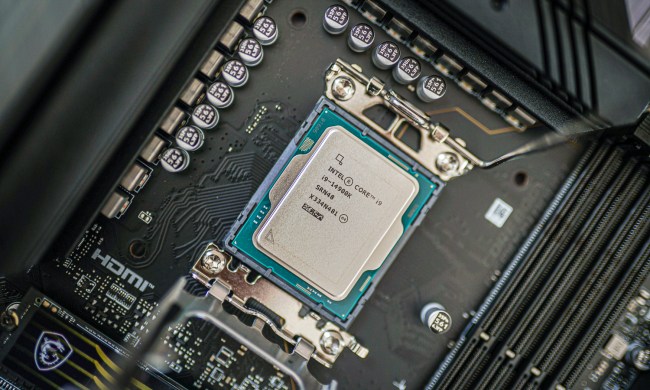The big challenge with making virtual reality feel real is that it’s still not particularly easy to convincingly replicate the sensation of being able to reach out and touch something. Anyone who has ever reached out and, say, touched a wall knows full well that it’s not the same feeling as a small handheld controller vibrating in your hand. Similarly, haptic VR gloves can accurately simulate something like grasping a soda can, but can’t adequately simulate touching a hard flat surface.
Researchers at Carnegie Mellon University’s ever-impressive Future Interfaces Group have come up with an intriguing alternative, however. While it’s still very much an elaborate prototype, their wearable device manages to compellingly allow users to feel the surface of objects — whether that’s the bumps in a sculpture, the flatness of a wall, the curves of a railing, or any other tactile surface. Albeit in a way that looks totally different to just about any VR accessory we’ve seen before!
“[Wireality works] by running thin strings down from the shoulder to each joint on your hand,” Chris Harrison, head of the Future Interfaces Group, told Digital Trends. “These strings are controlled by what are essentially little fishing reels which can be controlled by a computer. As you reach out into open space in VR, the strings are free to unwind. But if you collide your fingers with an object, it locks the corresponding strings for those joints. The strings can all be triggered at different times so that your hand can cup complex shapes, providing a high degree of touch realism.”

Next to the kinds of controllers found on high-end VR setups, Wireality might look pretty complex. But Harrison said that the focus was on making a compelling solution that was both simple and low-cost (it costs only around $50). Systems for providing realistic feedback for applications like telesurgery are great for what they’re being asked to do, but they’re designed for one purpose and are unlikely to ever be accessible to average VR users.
“We gave [ourselves] a budget of $50, and stipulated our design had to be light enough to wear and energy-efficient enough to run on batteries,” Harrison said. “Those combination of factors made it a fun design challenge, led by Cathy Fang, a senior at CMU in mechanical Engineering. A secondary challenge was building a mechanism that was fast and strong enough to survive the strength of the arms. Arms are surprisingly strong, especially when you are trying to build something out of plastic.”
The work was originally due to be presented at this week’s ACM Computer-Human Interaction (CHI) conference, although it was canceled due to COVID-19. A peer-reviewed paper describing the work is available to read online.

